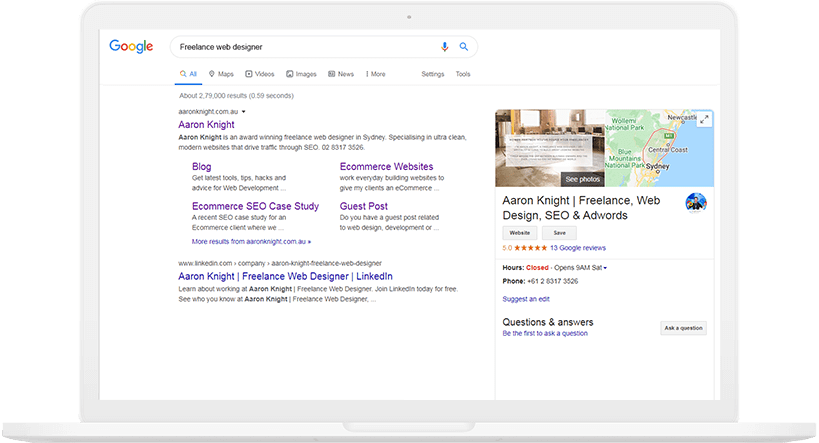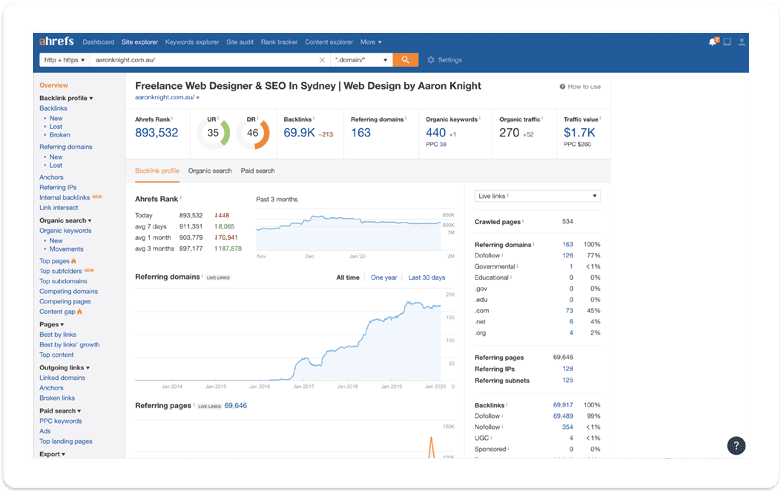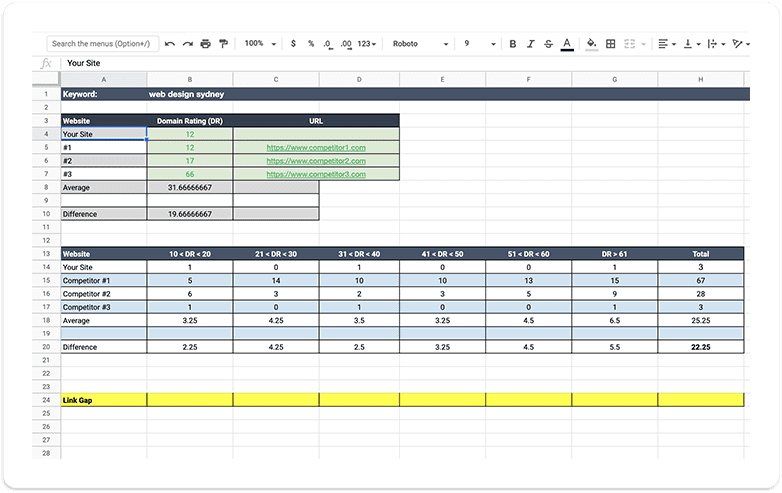A Link Gap Analysis is an off page audit designed to give you an "SEO roadmap" of the links you need to build in order to rank in the top 3 positions in Google.
A link gap analysis is a process I use to find out the average number of backlinks required in order to get to a top 3 position for a chosen keyword. Each one of those websites is going to have a backlink profile, so what we need to do is find the average of all 3 in order to get the number of links we need as a target. Simple, right?
The issue is that not all backlinks are the same. Some might be from websites which have been around for years, some might be on sites that are brand new, or some on a blog which has been around for a while but hasn’t got much traction yet. The well established sites which have a lot of traffic will generally have a bit more power than the others and can make a lot more of a difference when you receive a link from them.
Good news, it’s not rocket science! It just requires you to summon a bit of your inner data nerd.

Most business owners have at some stage of their lives implemented an SEO campaign to get their websites onto the first page of Google in order to increase their traffic. Generally what happens is an SEO team will come in, they’ll optimise the pages for certain keywords, they’ll point a few backlinks and boom, your website is up there in a month or two.
Being on the first page is great, but it doesn’t necessarily mean you’re going to receive traffic. Where you want to be is in the top 3 positions, but, how do you get there? And how long does it take?
Well, it’s kind of the same process, only we need to go into a little more detail to find out exactly what your 3 competitors have that you don’t.

We look at something called DR (Domain Rank). DR Is a general guide that helps us categorise websites using a score. Generally speaking, the higher your DR, the more weight your website has in the SEO world.
Ok, so we can see a websites link profile, and we can score each one of those links, so how do we work out the average needed for a top spot? Well, we put each link into something called DR Buckets.
DR buckets help us group together different websites so we can find the average number needed for each group. Say I had a website with 10 backlinks. 5 of those had a DR of 15, 2 had a DR of 21, 1 had a DR of 28, 1 had a DR of 40, and 1 had a DR of 52. We would take all of those links and put them in buckets with the following specs.
On this occasion we would put 5 links in the first bucket, 2 in the second, 1 in the 3rd and 1 in the 4th.
Well now we need to do this for the top 3 websites which appear in Google for the keyword that you’re trying to target. Once we’ve got those 3, we can then find the average number of links in each bucket which then gives us a goal post of the amount and score of links needed to appear in those positions. Simple.
There’s a few other metrics we need to take into consideration such as things like anchor text ratio, domain authority, content and on page optimisation. But by using the above data we can create a timeframe and strategy on how to move our website into the top 3 positions.








© 2024 by Aaron Knight. All rights reserved.
